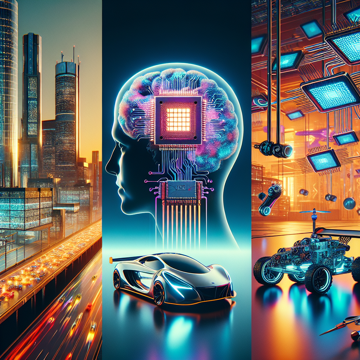AI Superchips, Brain Implants, and DIY RC Cars: Why 2025 Feels Like Living in a Sci-Fi Binge

Buckle up: the future didn't just arrive, it’s tearing up the pavement, hacking your brain, and livestreaming the whole thing in glorious first-person view.
If you blinked, you might have missed BMW’s test run of the i7, powered by all-solid-state batteries—the so-called “holy grail” of electric vehicle tech. Forget range anxiety; these batteries pack more energy into smaller, lighter modules, meaning your next road trip might actually outlast your playlist. BMW and Mercedes are locked in a Teutonic arms race, with each squeezing every mile out of their test beds, while battery juggernauts like BYD and CATL are plotting to flood the market with this tech by 2027. The stakes? A future where EVs don’t just rival gas guzzlers—they annihilate them on cost and range, if they can just crack mass production without breaking the bank[1].
But as the EV revolution inches closer, the energy powering them is getting a radical overhaul. At Lawrence Livermore’s fusion lab, scientists just doubled their own record, coaxing a star-in-a-bottle to spit out over eight megajoules—more energy than it took to ignite the reaction. Sure, the fine print says the wall plug still guzzles 300 megajoules to get things going, but every jump means we're inching toward clean, limitless juice. It’s not just another “thirty years away” pipe dream anymore—fusion is starting to look like a real player in the global energy arms race, and that means your next solid-state-charged EV could be sipping on stardust[2].
Across the neuro-frontier, Elon Musk’s Neuralink is skipping the hype and drilling straight into reality—literally. Five humans now pilot computers with their minds thanks to brain implants, and the next act is pure science fiction: restoring sight to the blind using chips that tap directly into the visual cortex. The “Blindsight” implant is slated for clinical trials by 2026, and if it works, the implications for maker-hackers and humanity alike are seismic. Big money is flooding in, and rival startups are nipping at Neuralink’s heels—so don’t be shocked if mind-controlled gadgets and DIY brain-hacks become the next Raspberry Pi craze[3].
Meanwhile, Nvidia isn’t content selling you a GPU—they want to be the silicon glue holding the AI universe together. By opening up their ultra-fast NVLink tech to third-party chips, Nvidia is letting everyone—from hyperscale cloud titans to tinkerers with lunchbox-sized “personal AI clouds”—build Frankenstein’s monster AI rigs. The DGX Spark desktop puts a petaflop of compute on your desk, letting you train models or run multi-modal AI without ever touching the cloud. The upshot: AI isn’t just for tech giants anymore. Now, even your home lab (or garage) can compete in the intelligence arms race[4].
And while all this sounds like the playground of billionaires and megacorps, the real action might just be in your hands. Makers are strapping ESP32 microcontrollers and tiny cameras onto RC cars, streaming first-person video over WiFi, and cobbling together multiplayer Mario Kart in their living rooms. It’s open-source, dirt-cheap, and just a Python script away from a homegrown robotics swarm. The same grassroots ingenuity driving these projects is the secret sauce pushing bleeding-edge tech out of labs and into garages worldwide[5].
So whether you’re soldering, coding, or strapping lasers to a fusion pellet, the line between mad science and your weekend project just got a lot blurrier.
1. https://electrek.co/2025/05/20/bmw-tests-first-evs-with-game-changing-all-solid-state-batteries/
2. https://gizmodo.com/record-breaking-fusion-lab-more-than-doubles-its-2022-energy-breakthrough-2000604093
3. https://www.benzinga.com/25/05/45538889/elon-musk-shares-major-neuralink-update-at-qatar-economic-forum
4. https://www.techgoondu.com/2025/05/19/computex-2025-to-broaden-ai-footprint-nvidia-offers-fast-links-to-third-party-chips/
5. https://hackaday.com/2025/02/06/rc-cars-with-first-person-video-all-with-an-esp32/